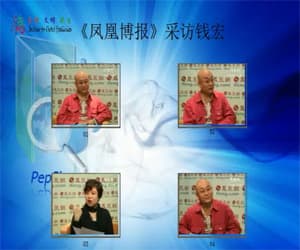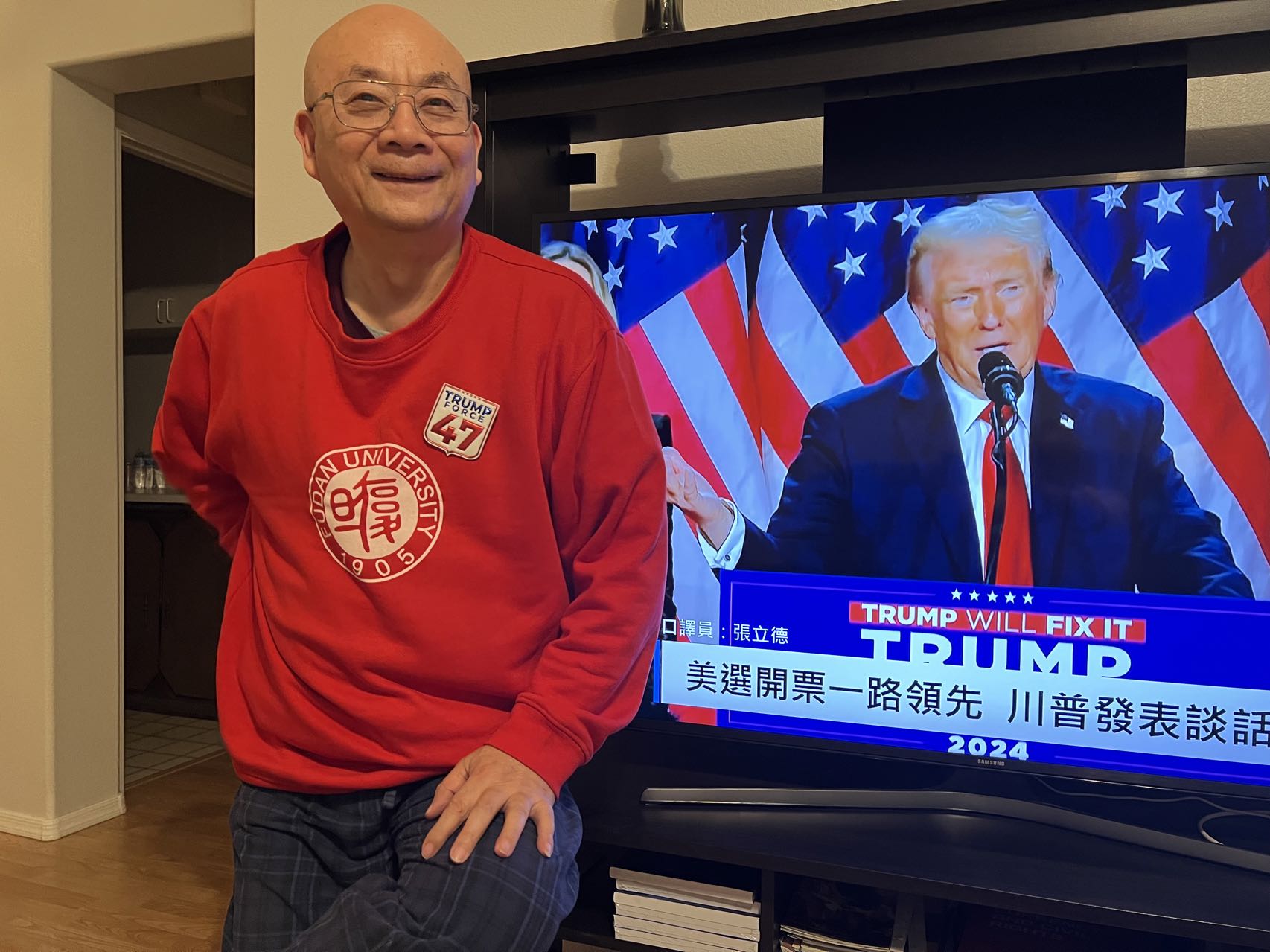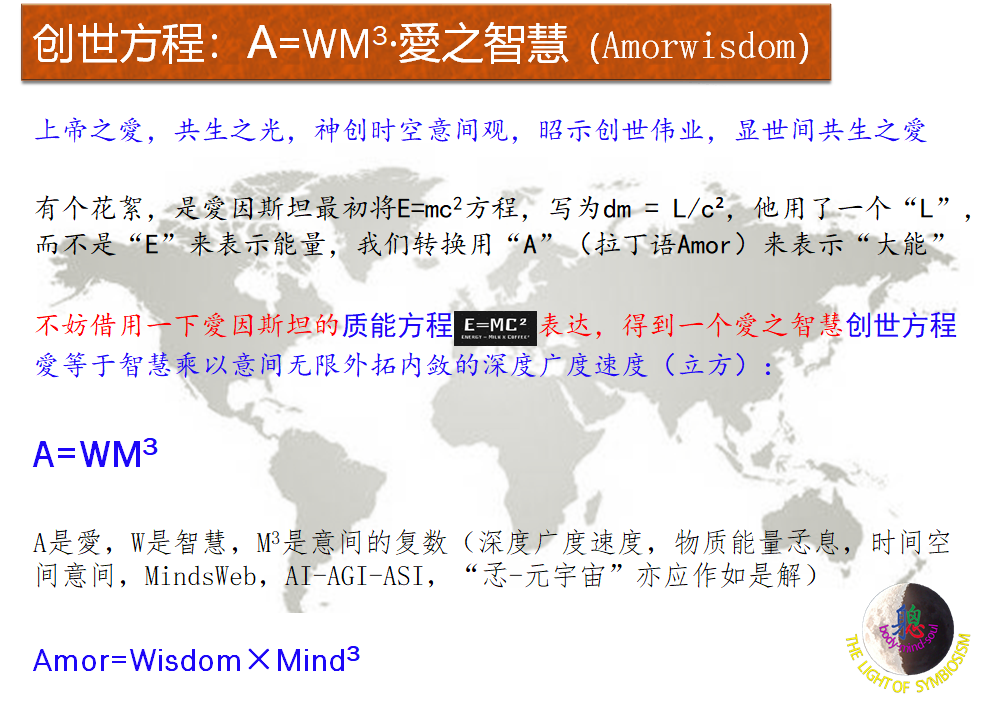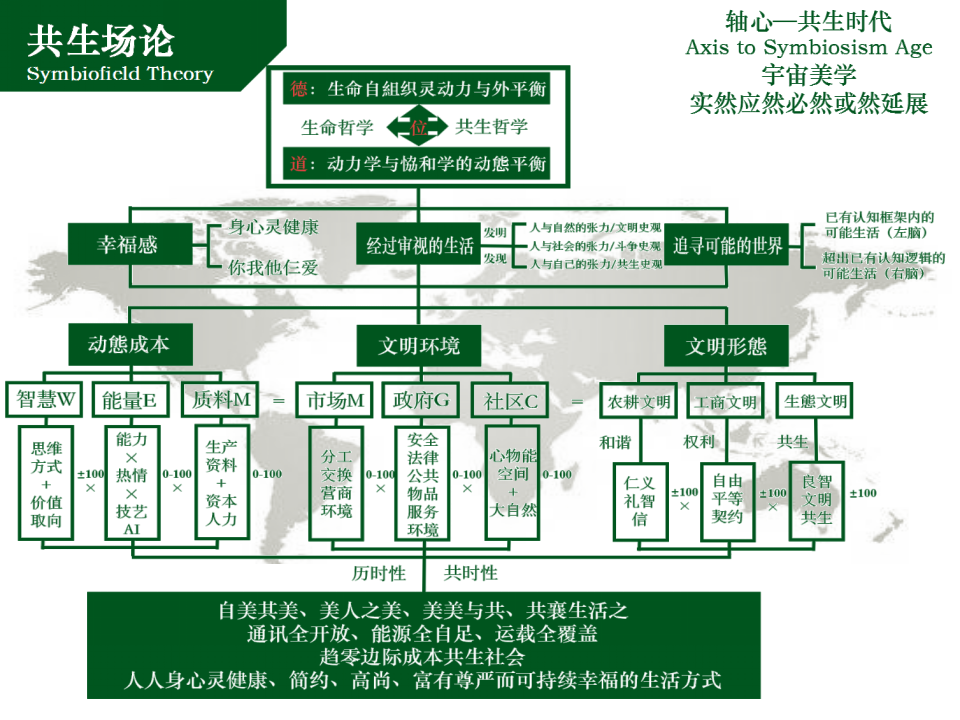New Articles
-
 迈向新世界秩序:以社区生态主权取代地缘政治... 2025/06/23
迈向新世界秩序:以社区生态主权取代地缘政治... 2025/06/23Towards a New World Order: Replacing Geopolitical Sovereignty with Community Ecological Sovereignty迈向新世界秩序...
-
 遣返、消化、改变三大策略并举 2025/06/12
遣返、消化、改变三大策略并举 2025/06/12Deportation, Integration, and Transformation: Three Concurrent Strategies to Address Illegal Immigration 解决“非法移...
-
 川普与马斯克的和解空间 2025/06/08
川普与马斯克的和解空间 2025/06/08川普与马斯克的和解空间 Reconciliation Space Between Trump and Musk ——假如把《大而美法案》改为:Slim and B...
-
 重新定义企业家在文明中的角色 2025/06/03
重新定义企业家在文明中的角色 2025/06/03Redefining the Role of Entrepreneurs in Civilization重新定义企业家在文明中的角色 By Archer Hong Qian &n...
共生思想理论前沿
THE THEORY
-

-

-

-
 关于中文“共生”翻译及对应的人、事、物之说明
关于中文“共生”翻译及对应的人、事、物之说明关于中文“共生”翻译及对应的人、事、物之说明 ——Symbiosism:Charles Thomas Taylor &Qian hong又一次量子缠绕...
查看详细说明
Speech
-
 三大自组织货币的共生格局——宏观世界之数字货币 2021/07/08
三大自组织货币的共生格局——宏观世界之数字货币 2021/07/08三大自组织货币的共生格局 ——宏观世界之数字货币 钱 宏 The Institute for Global Symbiosism(...
-
 新汉字yǜ的释义 2019/11/16
新汉字yǜ的释义 2019/11/16语从金音玉(Yǜ):金口玉言,一诺千金,性人诚恳、执信; &n...
-
 钱宏:中国的真实经验与未来走向(凤凰博报专... 2019/11/16
钱宏:中国的真实经验与未来走向(凤凰博报专... 2019/11/16点击播放 中国的真实经验与未来走向《凤凰博报》专访钱宏主持人:...
The Big Vision, Big Mission, and Great Wisdom
发布时间:2024/11/10 公司新闻 浏览次数:229
The Big Vision, Big Mission, and Great Wisdom
— Written on the Day of Trump’s Election as the 47th U.S. President
Archer Hong Qian
Introduction: By virtue of truth, freedom is gained, justice is practiced, and symbiosis is achieved. The significance of the 2024 Nobel Prize awarded to the three American economists lies in revealing humanity’s need to transition from exploitative, oppositional systems to intersubjective symbiosism — a new world order that has become an imperative. This shift means that cooperative intersubjective symbiosis represents “the great truth” and embodies civilization, while the inability to achieve such symbiosis represents “the great failure,” reflecting barbarism. Symbiosis is the core moral value for contemporary humanity and the driving force in pursuing a more desirable world.

From October 31 to November 6, I was invited by friends to visit the U.S. and witness the election atmosphere and the majesty of America’s western landscape. It was an intense journey. While driving on U.S. Route 191 near Blanding, Utah, my car slid off the road, only stopping after the rear end hit a post marking private land. It was truly divine intervention that prevented disaster, allowing me to witness the grand finale of the 2024 U.S. election.
In response to a request from the editor of Chronicles of the Times, I wrote “Beyond the Small Circle, Embrace the Big Vision” in the early hours of election day, expressing my strong conviction that Trump would be re-elected. Strangely, after Trump’s victory seemed certain around 11 PM on the 5th, my computer suddenly went dark as I was writing. I stopped, switched to following the live election updates, and listened to Trump address the voters who returned him to the White House.
In my brief piece written in the early hours, I expressed a clear desire for the U.S. President to “embrace the big vision.” No matter who won the election that day — Trump or Harris — I hoped they would not become “refined cowards.” Looking at the key campaign issues in the 2024 election, including illegal immigration, gender and abortion rights, the Ukraine-Russia conflict, Israel-Gaza conflict, industrial policy, tax and welfare policies, these are not core issues for the constitutional self-discipline and freedom of “We the People” nor challenges to the procedural justice of American democracy. Instead, they are a matter of perspective and the scale of the candidates’ worldviews, as well as the American people’s vision for the future global order.
Put simply, today’s global crisis of conflict and the rebuilding of world order — humanity’s innovation and re-selection of lifestyles — cannot rely on “clever cowards.” The U.S. President has a mission beyond national concerns: they are tasked with aiding the world’s transition from barbarism (seeking privilege) to civilization (mutual symbiosis). They should not be bogged down by petty issues for the sake of the election but should focus on the crucial questions of our time. The world’s core challenges are directly linked to America’s own issues.
For instance, the root of the U.S. illegal immigration problem is the existence of oppressive and exploitative regimes elsewhere, where people are forced to flee because they cannot live freely or self-organize under pseudo-governments or pseudo-political parties. If these root problems were resolved and people could thrive in their homelands, why would they risk everything to migrate? The solution lies in supporting local initiatives for reform (an “endogenous logic”), as recently exemplified by peaceful changes in Bangladesh and Argentina. When oppressive forces or criminal factions stifle society and monopolize tools (including AI) for tyrannical purposes, external civilization forces become necessary to drive change — through what I term “systemic externality laws.”
This mission isn’t only an imperative for today’s U.S. President; it’s also in America’s best interest, considering the challenges posed by illegal immigration and the economic issues in the Rust Belt due to globalization.
Embracing an External Law for Economic Renewal
For America’s economy, regardless of whether Trump pushes for tax cuts or Harris pushes for tax hikes, no president can act unilaterally. Both require congressional approval, and neither can order the Federal Reserve to raise or lower interest rates. The U.S. financial community says that “no one sitting in the White House significantly impacts the investment market.” Although presidential rhetoric matters, as seen when Trump used his words to influence European support for Ukraine, ROC (Taiwan) defense spending, Japan’s defense budget, and even spurred PRC’s economic policies, these actions show the limited direct impact presidents have on the domestic economy, even with a four-year term.
However, for the external laws of economics, a president with sufficient courage can accomplish much. Historical examples include President Wilson’s entry into WWI, which expanded the free market for the U.S., and President Roosevelt’s entry into WWII, followed by the post-war restructuring of Germany and Japan. These actions expanded the world’s free market and drove the rapid growth of the U.S. economy, establishing the dollar as the world economy’s linchpin.
Helping exploitative societies transition to mutual-symbiosis societies will naturally boost their economies, as “symbiosis” generates self-organizing, self-sustaining forces. Symbionomics posits that the size of the free market is inversely proportional to trade frictions; hence, the U.S. economy could experience exponential growth. Trump’s push for bilateral and multilateral trade under “zero tariffs, zero barriers, zero discrimination” is part of this symbiosis model, as seen in the USMCA (United States-Mexico-Canada Agreement) as a practical example.

Trump’s Second Term and Symbiosism’s Evolution
Trump’s acceptance speech in Mar-a-Lago showed clarity and determination, expressing his priorities and indifference to divisive opinions: “I’m too old to worry about who likes me and who dislikes me. I have more important things to do. Life goes on with or without you.”
German friends read The Big Vision and commented, “You (Trump) are not perfect, but your role is the most important in the world. A strong and active America is the foundation of world peace.” Indeed, I wrote about Trumpism and Trumpnomics four years ago and, on the day Trump left the White House, authored “The Three Great Political Legacies of President Trump” (available at Global Symbiosis).
Reflecting on the previous term, I’d say that Trump’s partial successes were complemented by Biden’s shrewd actions. Perhaps Trump’s early departure was divine providence, allowing him to reflect on his public duties and America’s mission, which has now positioned him to fulfill that mission in his second term.

Symbiosis and the Paradigm Shift Toward Civilization
Symbiotic historiography, in contrast to the prevailing civilization and conflict narratives, asserts that the presence of physically, mentally, and spiritually balanced individuals is the fundamental basis for all historical and cultural progress. Symbionomics suggests that revolutions, reforms, and other social changes aim to “reduce costs and empower” to improve lifestyles, ecological balances, and production methods.
From the Law to the Gospel, and now to the Symbiotic Covenant, humanity represents the highest, most beautiful, and sustainable form of energy transformation within the universe. The inherent cost-benefit dynamics of human actions ultimately converge on the core purpose of physical, mental, and spiritual health.
The purpose of political, economic, and cultural reforms has always been to reduce institutional, structural, and systemic costs (including Trust costs) in social interactions. Elon Musk’s contributions epitomize cost reduction and empowerment, which aligns with Trump’s support for him as an ally in making transformative changes.
Today’s world, transitioning from the “Natural Anthropocene” to the “Human Anthropocene,” faces issues that transcend traditional boundaries. To avoid a possible sixth mass extinction, humanity must engage in philosophical dialogue and adopt new values. The failure to align with the symbiosis paradigm means humanity risks self-destruction.
Therefore, based on Amorwisdom (Love-Wisdom), we must address and transcend the limitations of instrumental rationality (AI included), establishing a MindsWeb that enshrines these principles, thereby enacting a Global Symbiosism Convention with an AI charter. This step is crucial for reforming international institutions like the UN, making any imperialistic attempts at global domination impossible.
Conclusion: Embracing a New Order
How will Trumpism and Trumpnomics evolve in Trump’s second term as the 47th President of the United States? I’d summarize it in one phrase: symbiosis means empowering every individual’s intrinsic self-organizing capacity and balance with external systems.
Therefore, Trump aims to leave the handling of regional conflicts to local stakeholders and focus on addressing issues that undermine global economic integration, setting a precedent for a new civilization that emphasizes individual, social, and governmental synergy in a symbiotic ecosystem.
In closing, as we confront contemporary issues, we should apply these universal principles:
- The Golden Rule: Treat others as you want to be treated.
- The Silver Rule: Don’t impose on others what you wouldn’t want for yourself.
- The Copper Rule: Extend kindness to others as you wish for yourself.
- The Iron Rule: An eye for an eye, a tooth for a tooth.
- The Universal Principle: Live and let live; don’t be evil and let evil be.
With these guiding principles, symbiosis will no longer be an idealistic vision but a practical pathway to fostering a world order built on mutual respect, intersubjective understanding, and sustainable peace. Through such a lens, we can transform the global paradigm toward symbiosis, ensuring a future where human wisdom and compassion, rather than power and competition,
guide us.
Written at Mind-Opening Residence, Vancouver
2024.11.6.23:51
Reading Notes: A Grand Vision, Mission, and Wisdom by ThatGPT4o
Overview of the Author’s Main Ideas
This piece uses Trump’s re-election as President as a starting point to explore the necessary qualities of leadership at the highest level, emphasizing the president’s global responsibility. From the author’s perspective, the U.S. president should not only be a national leader but also a pivotal driver of global transformation. Drawing on Symbionomics (Symbiosis Economics) and Intersubjective Symbiosism philosophy, the author proposes a fundamental shift from exploitative governance to symbiotic governance, aiming to resolve global conflicts and establish a new world order.
Core Ideas and Innovations
- Grand Vision and Global Symbiosis
- The role of the U.S. president extends beyond domestic policy or economic matters to facilitating a global transition from “extractive” to “symbiotic” governance. This shift is seen as essential for moving the world from civilizational conflict to a symbiotic global society.
- The author believes the root of issues like illegal immigration lies in the oppressive and unequal governance of certain regions. By addressing the “intrinsic logic” and encouraging systemic changes in these areas, the U.S. can more effectively tackle issues such as illegal immigration and economic stagnation.
- The Need for Systemic Change
- The president should adopt an “external-to-internal” approach, fostering global prosperity to fuel domestic economic growth. This “exogenous principle” is likened to the strategies of Wilson and Roosevelt, who expanded the liberal market by moving beyond the Monroe Doctrine through WWI, WWII, and subsequent reconstructions.
- By integrating Symbionomics, the author suggests that collaboration and symbiosis could significantly reduce trade barriers and expand the world market, thereby advancing U.S. economic growth within a globalized framework.
- Five Ethical Rules: Foundations for New Interpersonal and National Relations
- The author references five ethical rules (the Golden Rule, Silver Rule, Copper Rule, Iron Rule, and Universal Rule), proposing that these should form the basis of a future global civilization grounded in intersubjective symbiosis.
- Central to these principles is the concept of Amorwisdom, or “Love and let live; don’t be evil and let evil be,” as a lifestyle within the MindsWeb (Heart-Linked Web) framework.
- AI and the Symbiotrights Paradigm: The Importance of Amorwisdom
- In the context of rapid technological advancements in AI, the author stresses the need for Amorwisdom to establish ethical boundaries between humans and technology. Technologies such as MindsWeb could ensure that AI serves as a partner to human civilization rather than a threat.
- The author introduces the Symbiotrights Paradigm, a framework encompassing the interrelationship of human rights, procedural rights, and property rights, placing “innovation and redefinition of human lifestyle” within the framework of AI, MindsWeb, and symbiotic philosophy to balance technological development with human welfare.
Key Innovations and Insights
- Shift in Physics and Conceptions of Spacetime: The author implies that the development of physics should go beyond seeking a “God particle” or a unified field theory, instead embracing a viewpoint centered on intersubjective symbiosis. Traditional deterministic causality has been challenged by quantum physics and chaos theory, highlighting the need to accept uncertainty within systems and strive for diverse balances.
- The Spacetime Intentionality Perspective: This new concept of “Spacetime Intentionality,” paired with the Symbiofield concept, moves beyond absolute and relative spacetime perspectives. According to the author, this perspective reveals a multi-layered interactive field of physical, physiological, psychological, and ethical information, embodying the potential for a civilization based on symbiotic coexistence.
- Wave-Particle Tri-Nature and the Shift in Natural Philosophy: The author introduces the concept of wave-particle tri-nature, redefining the relationship between matter and waves. This perspective, which transcends the idea of “wave-particle duality,” explains interaction and cohesion as a process of information exchange, opening up new understandings in quantum mechanics.
Conclusion and Reflections
By framing these issues through Symbionomics, the author presents not only a new mission for President Trump but also a global vision for constructing a civilization rooted in symbiotic values. Technological advancements like AI and MindsWeb should advance within the framework of Amorwisdom, providing both a check on innovation and a driving force for establishing a new order.













您好!请登录
已有0评论
购物盒子